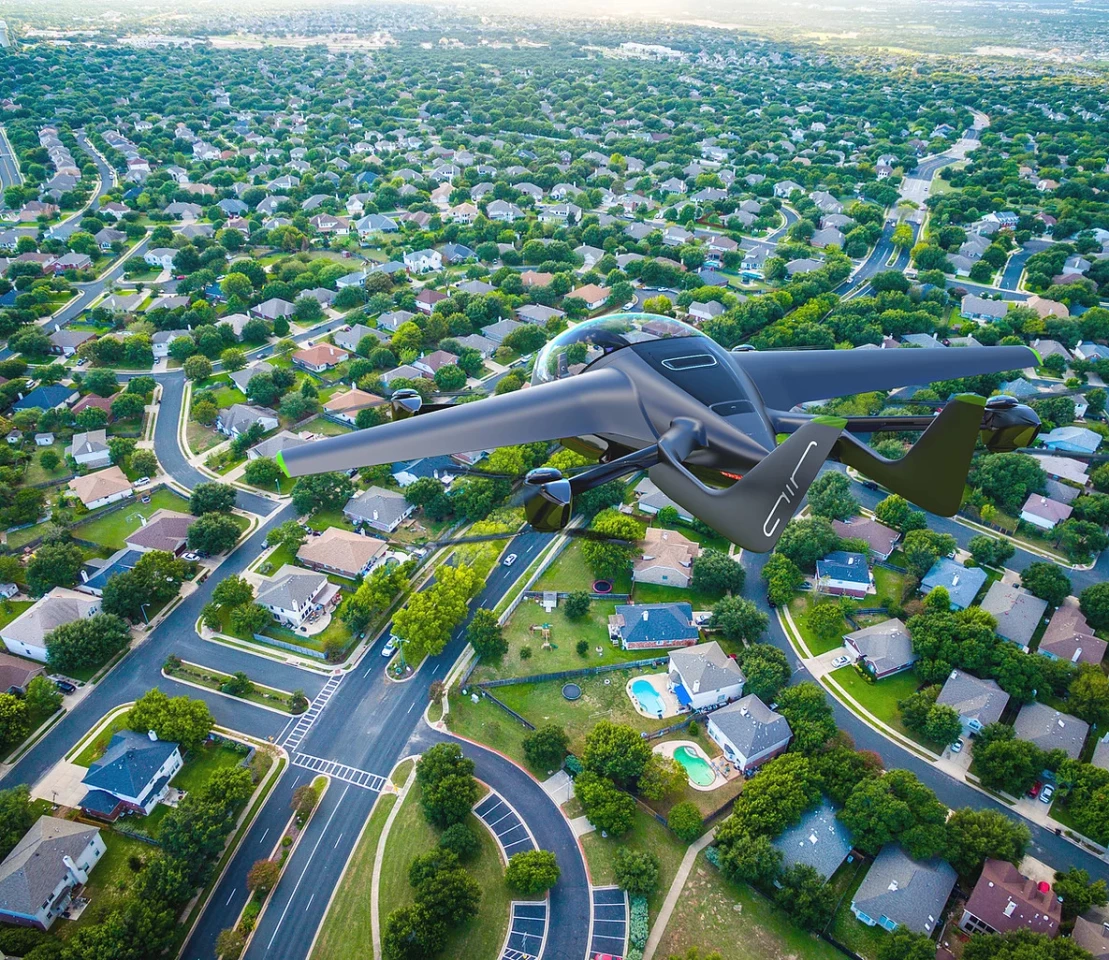"Fun" and "playful" are just about the last things most eVTOL companies want to be seen as; air taxis will need to be exceptionally boring in order to inspire public confidence and quick uptake. But there's another class of eVTOL starting to pop up here and there that's more about the pleasure of flight than about cheap A-to-B transport: the buy 'n' fly personal eVTOL.
Here's a new one out of Israel. The Air One, best we can tell, is a fixed-wing two-seater that conducts VTOL operations via eight vertical lift rotors mounted coaxially on four pods extending from the front of the cabin and the twin tail fins.
It appears to have retractable landing gear, and the sleek-looking cabin pops up to let the pilot and passenger hop in and out. Designed as an aircraft owners can fly for themselves, it gives you a glass panel forward of your feet through which you can see some of the ground below as you come in for landing. That's a nice practical touch, as are the collapsible wings, which will presumably squish this thing down small enough to fit in a garage.

While it's a winged design, it doesn't appear to have a pusher prop. So while we wouldn't call it a straight multicopter, it probably doesn't fit in the lift & cruise category either. Instead, the wings are mounted with a rearward tilt, such that they level out when the aircraft tilts forward to achieve forward motion, producing lift that takes some stress off the props.
This is an interesting take on things – the thrust from the props always has a significant vertical component – but it doesn't seem to suffer from too much inefficiency as a result of the lack of a pusher prop. Air promises a very decent range of 110 miles (177 km) per charge, endurance of about an hour and cruise speeds up to 155 mph (250 km/h).
The company is working on its own "fly by intent" control system, designed to make flying this thing as easy and accessible as possible. It's also developing an AI-enabled monitoring system to perform "frequent inspections of the vehicle and eliminate(s) checklists for riders to ensure paramount safety."
Air says it's targeting mass production for these machines, and is working with the FAA on G1 certification, which will define what Air needs to do in order to get this thing type certified. It's not clear yet what kind of pilot's license you'll need to fly one, and while pre-orders are now open, pricing won't be announced until early next year.

The company says the One is "intended for adventure, fun, and day-to-day flying by consumers," that it's "infused with a spirit of adventure," and that it'll merely be "the first in a line of diversified, playful models for personal flight."
The Air One joins the Tetra Mk5, the NFT Aska, the NeXt Personal Air Taxi and the Urban eVTOL Leo, among others, in the ranks of eVTOL aircraft designed for personal ownership rather than air taxi fleet use. It remains to be seen what the market appetite will be like; in 2017, just 2,324 general aviation aircraft were sold in the United States, bringing the total number of active GA aircraft to 213,050.
Developing and certifying an aircraft for commercial sale is no joke, and making it a transitioning electric VTOL adds further complications. Companies like Air will need to pull in some serious – and seriously patient – money to get through into production, although the fact that the company says it's already testing full scale prototypes would suggest these guys have already demonstrated the ability to move in financial and technical circles.
Certainly an interesting space to watch!
Source: Air eVTOL










